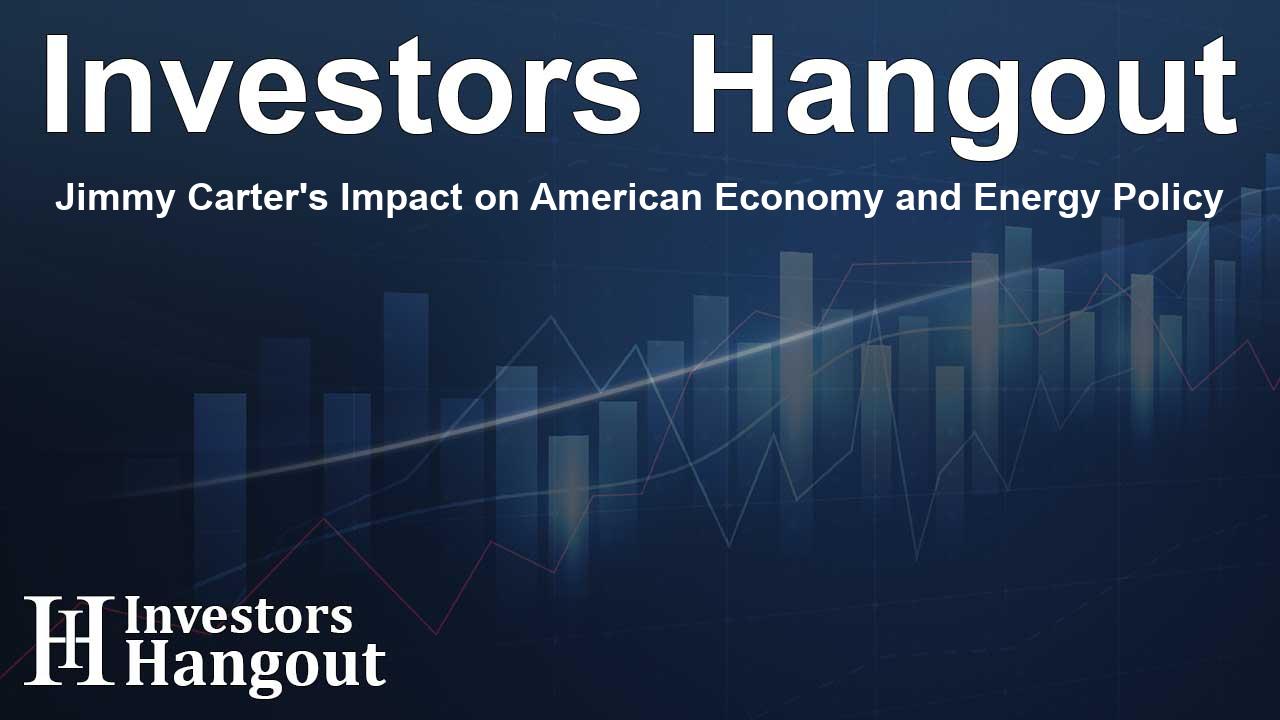Jimmy Carter's Impact on American Economy and Energy Policy

Jimmy Carter's Economic Challenges and Solutions
Former President Jimmy Carter passed away at the remarkable age of 100, leaving behind a profound legacy. Throughout his presidency, he faced numerous economic hurdles that included inflation spikes, high-interest rates, and a significant energy crisis. These challenges highlighted his unique approach to governance and commitment to improving the nation’s economic stability.
Inflation and Interest Rates Under Carter
Carter's presidency, which began in 1976, was marked by economic conditions that strained the American public. The nation grappled with a soaring inflation rate that averaged 9.9%, peaking above 13% by the close of his term. To address this troubling situation, he appointed Paul Volcker as the chairman of the Federal Reserve Board in 1978. Volcker's solution involved steep hikes in interest rates, which reached an astonishing 18% for consumer loans by 1980, contributing to what many termed "stagflation"—a troubling fusion of stagnant economic growth and inflation.
The Consequences of Stagflation
This harsh economic climate ultimately proved detrimental to Carter’s reelection bid in 1980. As he sought another term, rising unemployment and recession loomed large over his candidacy, significantly reducing his chances against Ronald Regan, his opponent.
The Chrysler Corporation Bailout
One of the most notable actions taken by Carter during his presidency was the intervention in the auto industry, specifically during Chrysler's near-collapse in 1980. Faced with the dire prospect of bankruptcy amid high unemployment, Carter spearheaded the Chrysler Corporation Loan Guarantee Act. This pivotal measure provided $1.5 billion in loan guarantees to prevent the automaker’s downfall. This governmental intervention not only salvaged Chrysler but also preserved thousands of jobs nationwide, reflecting a broader trend toward increased government involvement in the economy.
Long-term Impacts of the Bailout
Although the Chrysler bailout was a temporary success, the automaker eventually filed for bankruptcy in 2009, later rescued by Fiat, which would become Fiat Chrysler Automobiles N.V. This company repaid a staggering $12.5 billion of the government loans and is known today as Stellantis N.V. This transition represents a crucial evolution in the automotive industry, emphasizing the lasting impact of Carter's initial rescue efforts.
Carter's Leadership During the Energy Crisis
In addition to economic challenges, Carter also navigated a significant energy crisis triggered by international events. The Iranian Revolution of 1979 decimated global oil production, resulting in dramatic price increases, from $13 to $34 per barrel. This crisis not only led to fuel shortages causing long lines at gas stations but also prompted Carter to advocate for energy conservation and alternatives.
Promoting Energy Conservation
Carter's approach to tackling the energy crisis included a strong call for national unity in energy conservation efforts. He famously described the challenge as the "moral equivalent of war," emphasizing the need for Americans to unite in their conservation efforts. His administration took visible steps to promote renewable resources, such as installation of solar thermal panels on the White House, a symbol of commitment to future energy solutions.
A Vision for Renewable Energy
Although many of Carter's initiatives faced setbacks after he left office, his foresight regarding renewable energy laid a pivotal groundwork for future innovations. His proposals led to advancements in energy efficiency and the development of new technologies that managed energy consumption.
The Shift in Energy Policy
After Carter’s term, the subsequent administration reduced funding for renewable energy projects, leading to the removal of the solar panels from the White House roof in 1986. Despite this, the importance of renewable energy and conservation that Carter championed has resurfaced in contemporary discussions on energy independence and climate change.
Conclusion
Though he faced immense challenges, Jimmy Carter’s presidency significantly influenced American economic policies and energy strategies. His commitment to democracy and humanitarian efforts showcased his attempts to effect change during turbulent times. The legacies of his economic decisions, particularly his actions regarding Chrysler, plus his advocacy for energy efficiency, resonate within today’s societal frameworks.
Frequently Asked Questions
What was Jimmy Carter’s impact on the U.S. economy?
Jimmy Carter's presidency was marked by high inflation rates and a significant bailout of Chrysler, which reflected his hands-on approach to economic challenges.
How did Carter address the energy crisis?
Carter promoted energy conservation and established initiatives focused on renewable energy, including solar energy, to mitigate shortages and reliance on fossil fuels.
What led to stagflation during Carter's presidency?
Rising inflation combined with high interest rates and stagnant economic growth contributed to stagflation under Carter's administration, impacting his reelection bid.
What actions did Carter take regarding Chrysler?
Carter signed the Chrysler Corporation Loan Guarantee Act which provided $1.5 billion to help Chrysler avoid bankruptcy, saving numerous jobs.
How did Carter influence renewable energy policy?
Carter’s focus on renewable energy during his presidency initiated conversations and advancements in energy efficiency that have persisted into modern times.
About The Author
Contact Logan Wright privately here. Or send an email with ATTN: Logan Wright as the subject to contact@investorshangout.com.
About Investors Hangout
Investors Hangout is a leading online stock forum for financial discussion and learning, offering a wide range of free tools and resources. It draws in traders of all levels, who exchange market knowledge, investigate trading tactics, and keep an eye on industry developments in real time. Featuring financial articles, stock message boards, quotes, charts, company profiles, and live news updates. Through cooperative learning and a wealth of informational resources, it helps users from novices creating their first portfolios to experts honing their techniques. Join Investors Hangout today: https://investorshangout.com/
The content of this article is based on factual, publicly available information and does not represent legal, financial, or investment advice. Investors Hangout does not offer financial advice, and the author is not a licensed financial advisor. Consult a qualified advisor before making any financial or investment decisions based on this article. This article should not be considered advice to purchase, sell, or hold any securities or other investments. If any of the material provided here is inaccurate, please contact us for corrections.
